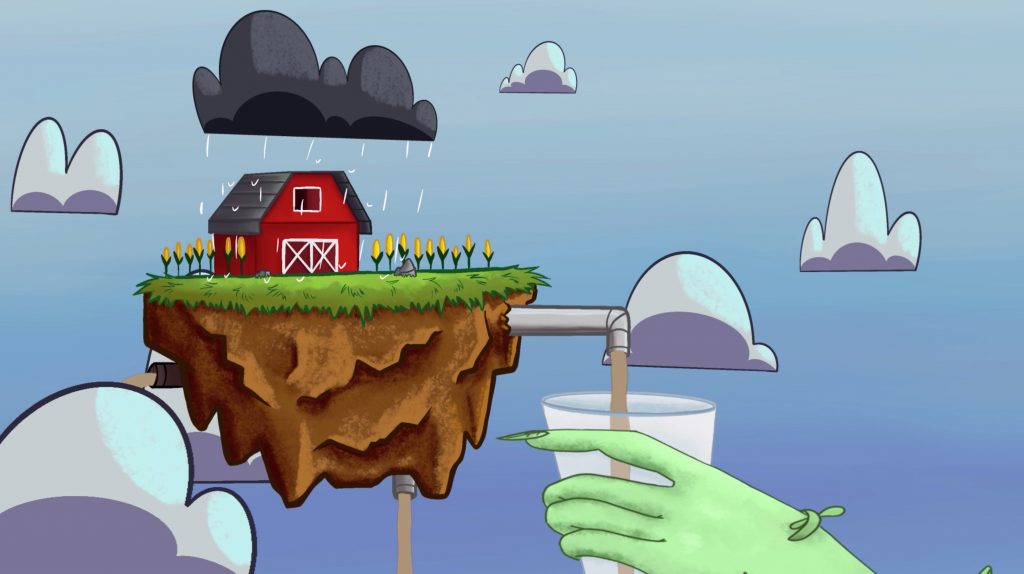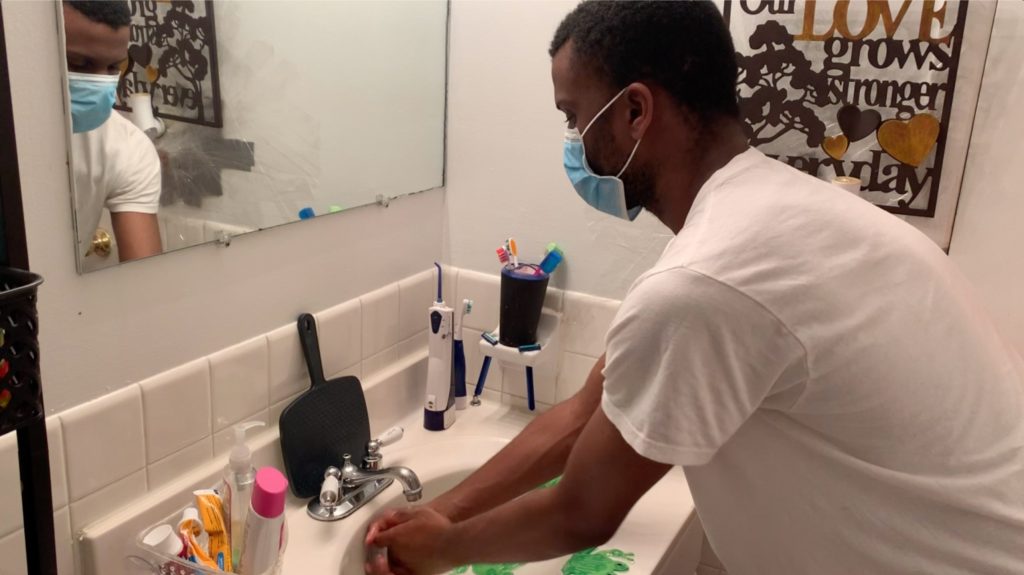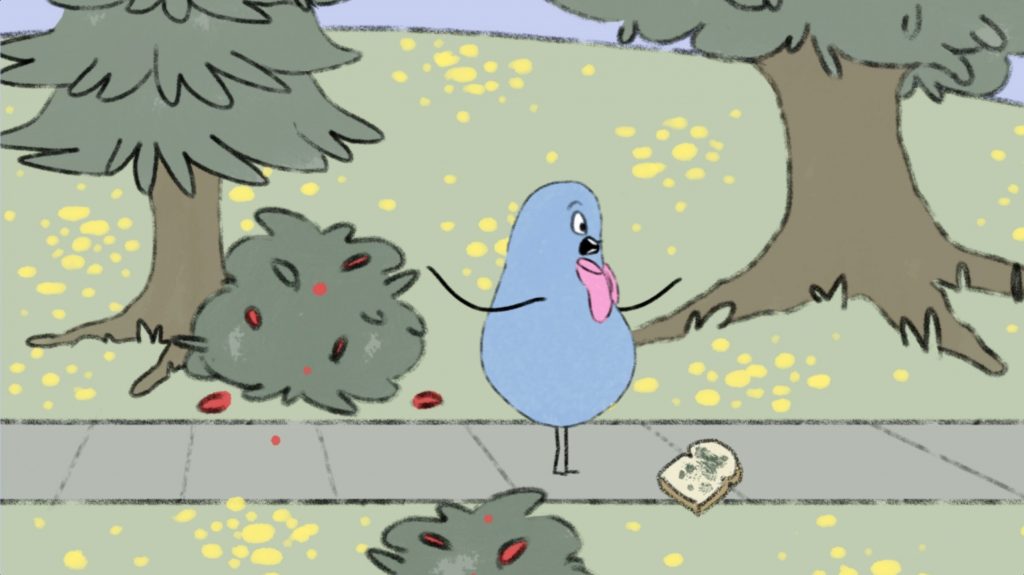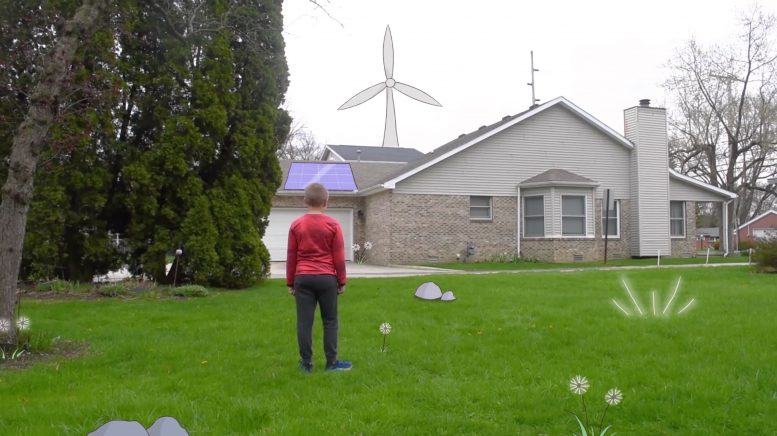By DAVID DUPONT
BG Independent News
When digital arts students worked on public service announcements as a class project, they learned about more than animation, storyboarding, and computer graphics. They learned about some of the environmental issues that threatened the earth and human health, and they learned about regional groups addressing these issues. And given they were working remotely because of the COVID-19 pandemic, they learned a few new coping skills.
ARTC 4410 has a record of providing community service. In past semesters, the class has done a project for NASA, and for the Toledo Opera. Last year the course won BGSU’s Kurt E. Hofmeister Outstanding Student Group Award for exemplary community-based learning experiences.

“We focus on doing collaborative projects for the public,” said Bonnie Mitchell, who created the course in 2000, and taught it the past two years. Her colleague Kim Young taught it the semester the class worked with Toledo Opera. The class takes on different projects each semester.
“We use art to make positive change in the world,” Mitchell said. “The ultimate goal art is something that can be used in a really positive way.”
The course grew from the stop motion animation course. After it was over, students asked what was next. There was nothing.

“Students want more animation, and I think they need to be more aware of their environment,” Mitchell said.
This semester the class worked with Green Energy Ohio, Freshwater Future, the Black Swamp Conservancy, and the BGSU Office of Campus Sustainability. Students Christian Young and Joshua Warren produced a fifth video to encourage the use of masks during the COVID-19 pandemic.
The pandemic presented a new set of obstacles, but did not keep the class from completing the projects.
“This class becoming a remote learning experience was a bit of a challenge,” student Paige Livesay wrote in an email. This was her second time taking the course, which is repeatable given the projects are different every semester.
The course involved a great deal of collaboration among team members. That typically happens, she said, with all the students together to give feedback on the work. Instead after spring break they had to meet via Zoom, and share files using Discord. Livesay said she had a poor internet connection, so this was a particular difficulty for her.
And they found working remotely required them to be far more organized. They struggled as they moved into the animation process, Livesay said. “In a way, however, this made for a useful learning experience because, in the animation industry, it is a super important skill to have organization abilities and clear communication. So perhaps this was a much-needed lesson for us animators.”
The students work closely with the clients.

The activists and experts gave presentations to the class, and then the students had to do further research. That can involve field trips. Last year, Mitchell remembered, bringing students out to a wetlands area near Eastwood schools, where they ended up knee deep in the swamp. They came back covered in mud and happy. That wasn’t possible this semester as the students were scattered about in various locations.
Before spring break, they presented storyboards of their concepts for the PSAs. They had to present the storyboards to the clients and have three questions for them prepared. The clients gave them feedback and selected which one to pursue.
Those were then animated.
Throughout the students were learning about the issues of concern to the clients.
The Freshwater Futures spot produced Emily Sullivan and Morgan Beier promotes testing of household water and the use of water filters. In preparing the spot the students heard from an activist from Flint, Michigan.
“I’ve learned just as much this time around as the first.” Livesay said. “This semester, I was the director and one of the animators on The Black Swamp Conservancy PSA, and this organization was a great one to learn about for the fact that it directly impacts Ohio. … The organization gave great insight on how swamps are natural filters of harmful runoff that can come from agricultural areas, and they are a necessary ecosystem to thousands of plant and animal species that require wetlands to remain healthy.”
The spot imagines following runoff water through Mother Nature’s digestive system, comparing wetlands to the kidneys.
The Green Energy Ohio spot produced by Bekah Alviani and Claudia Hoerr promotes the use of green energy.

The Office of Campus Sustainability spot produced by Rylee Barnett, Graham Braaten, Megan Jessie and Allison Lake features Reggie the Raccoon giving a lesson in what should not go into the recycling bin.
“A lot of these kids are depressed ,” Mitchell said. “They don’t have a lot of faith in the future. In many ways, it’s empowering the students to use their skills to make a better future for the world.”

